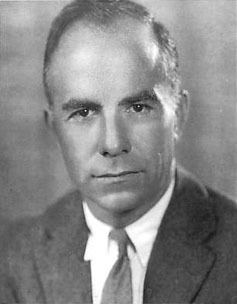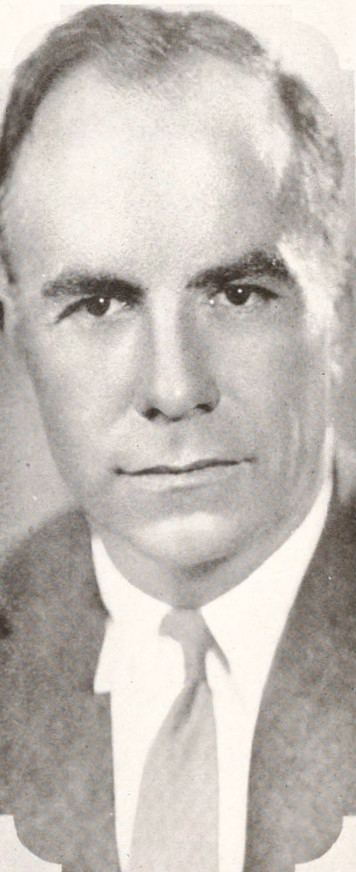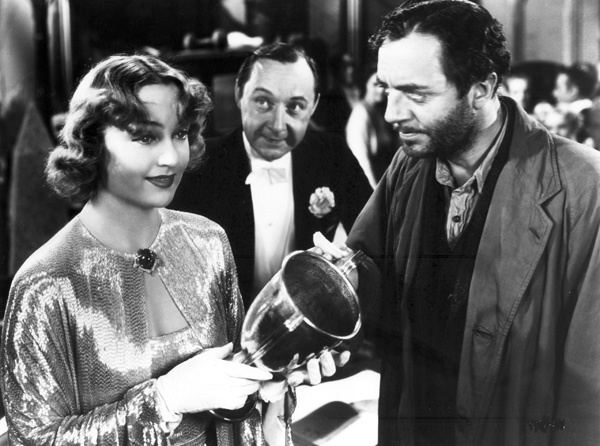Name Gregory Cava | Role Film director Children William Morse La Cava | |
 | ||
Spouse Grace O. Garland (m. 1940–1945), Beryl Morse (m. 1924–1930) Movies My Man Godfrey, Stage Door, Primrose Path, Gabriel Over the White Ho, 5th Avenue Girl Similar People William Powell, Alice Brady, Gail Patrick, Morrie Ryskind, Eric S Hatch | ||
Palcoscenico la vita e piena di sorprese gregory la cava
Gregory La Cava (March 10, 1892 – March 1, 1952) was an American film director best known for his films of the 1930s, including My Man Godfrey and Stage Door, which earned him nominations for Academy Award for Best Director.
Contents
- Palcoscenico la vita e piena di sorprese gregory la cava
- GREGORY LA CAVA FILMS
- Career
- Animator
- Live action reels and features
- References

GREGORY LA CAVA FILMS
Career

He was born in Towanda, Pennsylvania and studied at the Art Institute of Chicago and the Art Students' League.
Animator

Around 1913, he started doing odd jobs at the studio of Raoul Barré. By 1915, he was an animator on the Animated Grouch Chasers series.

Towards the end of 1915, William Randolph Hearst decided to create an animation studio to promote the comic strips printed in his newspapers. He called the new company International Film Service, and he hired La Cava to run it (for double what he was making with Barré). La Cava's first employee was his co-worker at the Barré Studio, Frank Moser. Another was his fellow student in Chicago, Grim Natwick (later to achieve fame at Disney). As he developed more and more of Hearst's comics into cartoon series, he came to put semi-independent units in charge of each, leading to the growth of individual styles.

La Cava also had the significant advantage over other studios of an unlimited budget: Hearst's business sense completely broke down when it came to his Hearst-Vitagraph News Pictorial and the "living comic strips" they contained. La Cava's main fault as a producer and director was that his cartoons were too clearly animated comic strips, hampered by speech balloons when rival Bray Studio was creating more effective series with original characters. He was apparently aware of this fault, and he had his animators study Charlie Chaplin films to improve their timing and characterization. But he didn't have time to achieve very much, because in July 1918, Hearst's bankers caught up with him and International Film Service was shut down.

Hearst still wanted his characters animated, so he licensed various studios to continue the IFS series. La Cava and most of the IFS staff got jobs with John Terry's studio (not surprising since John Terry himself was an IFS alumnus). This only lasted a few months before Terry's studio went out of business. The animators were immediately hired by Goldwyn-Bray (as the Bray Studio was now known), but La Cava was not, since Goldwyn-Bray had several producers of its own and La Cava was not interested in starting over. Instead, he moved west to Hollywood.
Live action reels and features
By 1922, La Cava had become a live-action director of two-reel comedies, the direct competitor to animated films. Among the actors he directed in the silent era are:
La Cava worked his way up to feature films in the silent era, but it is for his work in sound films of the 1930s—especially comedies—that he is best known today. And though he did not always get credit, he also often had a hand in creating the screenplays for his films. Among the sound films he directed are:
His output dropped severely in the 1940s, and he only officially directed one film after 1942, Living in a Big Way (1947).
La Cava died nine days before his 60th birthday on March 1, 1952 in Malibu, California. His remains were buried at Chapel of the Pines Crematory.
